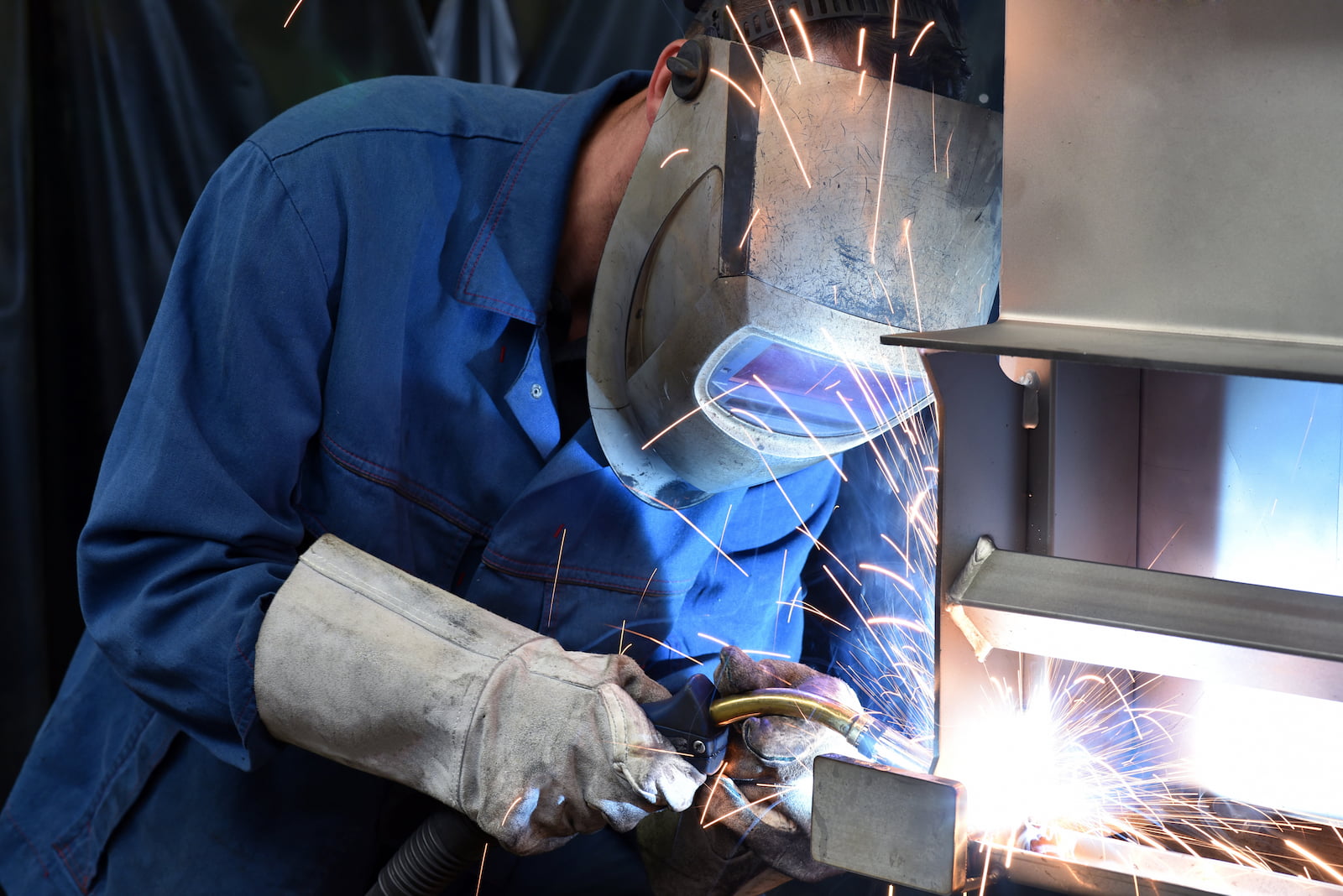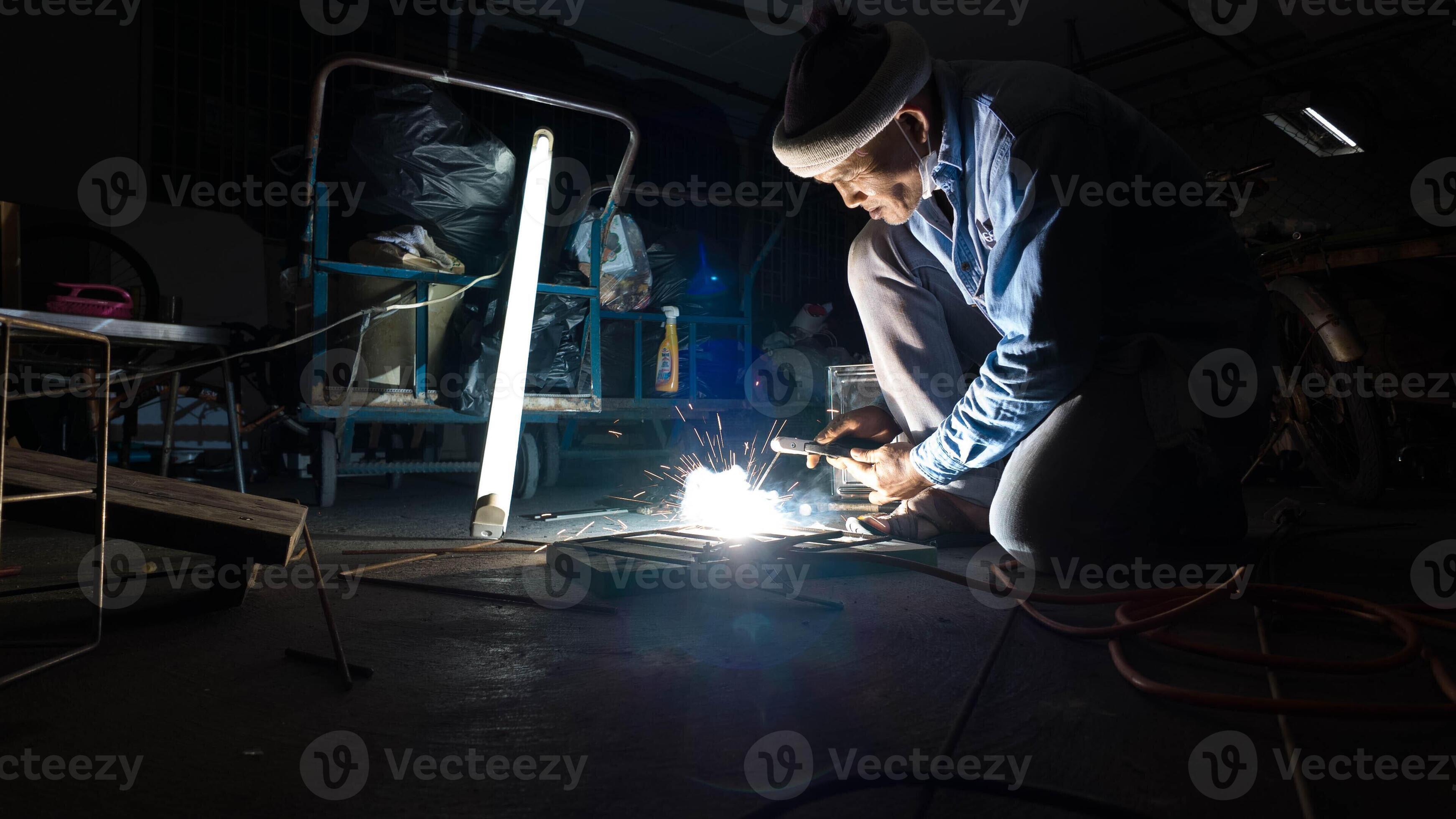Everything about Welding: Secret Insights Into Techniques and Ideal Practices for Success
Welding includes a selection of strategies, each suited for details products and applications. Comprehending these methods, such as GMAW, SMAW, and TIG, is important for achieving perfect results. The best tools and safety and security practices can not be forgotten. As preparation and repairing play crucial roles in the welding process, understanding these elements can greatly improve the high quality of the final item. What are the essential factors that guarantee an effective weld?
Comprehending Various Welding Methods
Welding strategies encompass a variety of approaches, each matched to certain applications and products. Amongst one of the most usual methods are Gas Metal Arc Welding (GMAW), Shielded Metal Arc Welding (SMAW), and Tungsten Inert Gas Welding (TIG) GMAW, likewise called MIG welding, is prominent for its speed and versatility, making it optimal for slim products. SMAW, or stick welding, is preferred for its simplicity and performance in outside environments, particularly with thicker metals. TIG welding offers precision and control, making it suitable for elaborate work and non-ferrous metals (Montana Mobile Welding and Repair Belgrade). Each strategy has its one-of-a-kind advantages and factors to consider, enabling welders to select the very best method based on the job's needs, material type, and wanted outcomes. Understanding these methods is essential for successful welding
Essential Welding Devices and Devices
While various welding methods call for specific skills, the best equipment and tools are similarly necessary for achieving high quality results. Necessary welding equipment consists of welding machines, which differ depending upon the technique-- such as MIG, TIG, or stick welding. Safety equipment, consisting of aprons, headgears, and gloves, assurances security and convenience during the process. Furthermore, clamps and fixtures aid safeguard products in area, making sure accuracy in welds. Consumables like welding rods, cord, and securing gas are likewise important elements that influence the quality of the weld. Tools such as grinders and cutters assist in surface area prep work and post-weld ending up, adding to a specialist result. Buying high-grade devices eventually enhances the performance and efficiency of welding projects.
Security Practices in Welding
Appropriate security techniques are crucial in the welding market to protect workers from possible threats. Welders should wear appropriate individual protective devices (PPE), consisting of headgears with appropriate shading, handwear covers, and flame-resistant apparel. Ample ventilation is vital to minimize exposure to unsafe fumes and gases created throughout the welding process. Additionally, workers must be learnt the proper handling of welding equipment to avoid accidents. Fire safety procedures, such as maintaining flammable products far from the welding location and having fire extinguishers easily available, are essential. Normal examinations of equipment and workspaces can assist determine possible hazards before they cause mishaps. By adhering to these safety and security techniques, welders can develop a more secure working setting and decrease threats associated with their trade.
Readying Products for Welding
Preparing materials for welding is an essential step that greatly influences the high quality and honesty of the end product (Montana Mobile Welding and Repair). Appropriate preparation involves cleaning up the surfaces to eliminate impurities such as oil, dirt, and rust, which can compromise the weld. Techniques such as grinding, sanding, or utilizing solvents are generally employed to attain a tidy surface area. In addition, ensuring that the materials fit with each other snugly is essential; voids can cause weak welds. It's also important to take into account the placement and positioning of the components, as this will certainly influence the simplicity of welding and the final result. Lastly, selecting the ideal filler material and guaranteeing compatibility with the base steels is essential for accomplishing solid, resilient welds
Tips for Achieving High-Quality Welds
Attaining top notch welds needs focus to detail and adherence to best techniques throughout the welding process. Appropriate joint preparation is crucial, ensuring surface areas are tidy and cost-free from contaminants. Picking the suitable filler product and welding method based on the base metals is important for excellent bonding. Maintaining constant travel speed and angle while welding can advertise and protect against issues uniformity. Furthermore, managing warm input is essential; excessive heat can lead to bending and deteriorated joints. If essential, routinely examining the welds during the process enables for instant changes. Utilizing suitable post-weld treatments, such as cleansing and stress and anxiety relief, can enhance the durability and honesty of the weld, inevitably guaranteeing an effective result.
Fixing Usual Welding Issues
Welding usually presents difficulties that can influence the high quality and integrity of the last item. Common issues such as porosity, irregular weld grains, and overheating can occur, each needing specific repairing techniques. Comprehending these problems is important for welders to enhance their abilities and achieve perfect outcomes.
Porosity Issues Explained
Although porosity can typically be overlooked, it continues to be an important issue in welding that can endanger the integrity of a completed item. Porosity refers to the presence of little gas pockets within the weld bead, which can lead and weaken the joint to premature failing. This problem commonly occurs from pollutants, dampness, or inappropriate shielding gas protection throughout the welding process. To reduce porosity, welders need to validate that the base products are clean and dry, use proper check that shielding gases, and maintain regular welding criteria. On a regular basis evaluating the devices and atmosphere can likewise help determine possible problems prior to they manifest in the weld. Resolving porosity effectively is vital for attaining strong, resilient welds that satisfy high quality criteria.

Inconsistent Weld Beads
Irregular weld beads can substantially impact the quality and strength of an ended up product. Numerous aspects add to this concern, including improper travel rate, inaccurate amperage setups, and inconsistent electrode angles. When the welder relocates as well rapidly, a grain might show up narrow and lack infiltration, while moving too slowly can cause excessive build-up. Furthermore, making use of the incorrect amperage can lead to either damaging or too much spatter, both of which concession weld stability. The welder's strategy, such as irregular torch motion, can also cause irregular grain look. To minimize these problems, welders must concentrate on keeping steady, regulated activities and making sure proper equipment settings to accomplish harmony in their welds. Uniformity is crucial to attaining strong and trusted welds.
Overheating and Bending Issues
Too much warmth throughout the a fantastic read welding process can result in substantial overheating and contorting issues, influencing the architectural integrity of the work surface. These troubles usually manifest as distortion, which can compromise placement and fit-up, making further setting up testing. Factors adding to overheating consist of the option of welding parameters, such as voltage and travel rate, as well as the sort of product being welded. To mitigate these concerns, welders need to preserve constant travel rate and ideal warmth input while checking the workpiece temperature level. In addition, preheating or post-weld warmth treatment can aid reduce tensions brought on by fast cooling - Belgrade Fabrication. Routine assessment and adherence to best practices are important in preventing overheating and making sure the longevity and dependability of bonded frameworks
Regularly Asked Concerns
What Are the Profession Opportunities in the Welding Industry?
The welding sector uses diverse occupation possibilities, including placements as welders, instructors, designers, and assessors. Specialists can function in manufacturing, building and construction, aerospace, and automotive industries, benefiting from solid demand and competitive incomes in different roles.
How Can I Enhance My Welding Speed Without Compromising Quality?
To boost welding rate without giving up top quality, one ought to practice reliable strategies, maintain equipment, optimize settings, and boost hand-eye sychronisation. Regular training and looking for feedback can additionally significantly contribute to attaining quicker, top quality welds.
What Certifications Are Available for Welders?
Numerous qualifications exist for welders, including those from the American Welding Culture (AWS), the National Center for Building And Construction Education And Learning and Research (NCCER), and different industry-specific organizations. These credentials enhance employability and demonstrate ability proficiency.
Just How Does Welding Influence the Characteristics of Metals?
Welding affects the residential properties of steels by modifying their microstructure, which can cause adjustments in solidity, toughness, and ductility. Warm input and cooling prices during the procedure significantly impact these useful reference material qualities.
Can I Bonded Dissimilar Metals Together?
